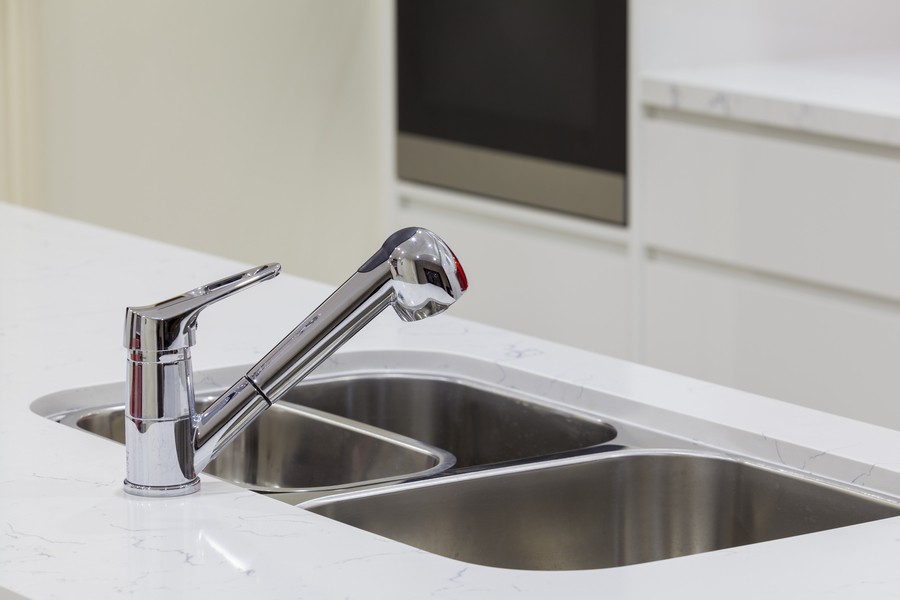
Caulk is a sealant used to fill small imperfections and gaps between the undermount sink and countertop.
You can apply it to seal a undermount kitchen sink to the butcher block countertop.
If the caulk becomes wet, it can start to bubble and form white deposits. This is due to the caulk reacting with moisture in the air.
There are several causes of caulk from the undermount kitchen sink, but the most common is water damage, peeling paint, and failing drywall.
Old caulk from undermount kitchen sinks can cause problems. The old caulk can become brittle over time, which can cause it to break apart. This can allow water to seep into the sink, which can lead to corrosion and a loss of water pressure in the sink. In addition, old caulk can also obstruct drainage, which can lead to flooding.
How to Remove Old Caulk from Undermount Kitchen Sink
Old caulk can cause water leaks and damage to your flooring. If you have an undermount kitchen sink, chances are good that the caulk was used to seal off the drain underneath the sink.
If you are dealing with an old caulk from the undermount kitchen sink, there are a few things you can do to remove old caulk from undermount kitchen sink safely. Follow these easy steps to know how to remove old caulk from your undermount Kitchen Sink.
Step 1: Dissolve the caulk
When you are removing caulk from a surface, you should soften it first. This will make the caulk easier to remove and won’t damage the surrounding area. One method is to use commercial caulk removers.
These products are designed to soften the adhesive and make it easier to remove. Just be sure to read the instructions carefully before using them, and be aware of any potential safety hazards.
Step 2: Remove the caulk
There are various techniques you might use to do this. By slicing through the caulk and peeling it away, you may remove it with a basic kitchen knife or putty knife.
To begin, make a tiny hole in the caulk to allow the putty knife or utility knife to enter. Then, using the knife, break apart and remove the caulk. For removing excessive layers of caulk, nose pliers may be the best instrument.
Otherwise, use a hacksaw to cut the old caulk off and then use hand sandpaper or power sander to smooth the surface. Be careful not to puncture any of the surrounding materials.
Step 3: Cleaning
After removing the old caulk, it is important to clean the surface to prevent moisture from building up and causing damage.
Use a soft cloth or a damp towel to wipe the area clean. Brush mildew away from most surfaces with a cloth wet with bleach or a non-ammoniated cleanser. Do not use harsh chemicals or solvents, as they could damage the surface. If necessary, sand the area until it is smooth.
Sum Up
Undermount kitchen sinks can often get clogged with old caulk and plaster. This residue can make it difficult to wash dishes and cook food properly. It can also cause leaks, stains, and other problems. The process to remove old hardened caulk sink is a simple and affordable way to fix these problems.
When it comes to caulking and recaulking an undermount kitchen sink, it’s important to remove old caulk and replace it with a fresh layer of sealant.
Become a Harlem Insider!
By submitting this form, you are consenting to receive marketing emails from: Harlem World Magazine, 2521 1/2 west 42nd street, Los Angeles, CA, 90008, https://www.harlemworldmagazine.com. You can revoke your consent to receive emails at any time by using the SafeUnsubscribe® link, found at the bottom of every email. Emails are serviced by Constant Contact








